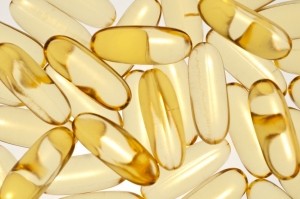Fish oil during pregnancy may protect infants from allergy

As could be expected, omega-3 supplementation during pregnancy and lactation raised the mothers’ levels of EPA (eicosapentaenoic acid) and DHA (docosahexaenoic acid) omega-3s.
And data published in Acta Paediatrica indicated that the EPA and DHA levels in colostrum and early breastmilk were associated with fewer allergies (food allergies or eczema) in the infant.
“Preventive studies in the field of atopic disease in childhood should supplement mothers and children with high enough doses of omega-3 LCPUFA [long-chain polyunsaturated fatty acids] to achieve high levels of eicosapentaenoic acid already in colostrum,” wrote researchers from Linköping University.
“Supplementation during pregnancy and early lactation seems mandatory, and supplementation just during the lactation period is not enough.”
GOED: No longer "should we", but now "how much?"
Commenting independently on the study’s findings, Harry Rice, PhD, VP of regulatory & scientific affairs for the Global Organization for EPA and DHA Omega-3s (GOED), told us: "The prevalence of allergic (atopic) diseases continues to rise globally. Given the present results demonstrating the protective benefit of EPA/DHA on IgE associated allergic disease in infancy, coupled with the history of demonstrated benefits (e.g. reduced risk of early preterm birth) of omega-3 supplementation during pregnancy and lactation, the question should no longer be 'should we supplement?', rather 'how much should we supplement?'"
Study details
The Swedish researchers recruited 95 pregnant women from families with a history of allergic disease and randomly assigned them to receive either daily omega-3 supplements (1.6 grams per day of EPA and 1.1 grams per day of DHA) or placebo (2.7 g soy bean oil) from the 25th week of pregnancy through until the third month of lactation.
Results showed that increased EPA and DHA levels in colostrum and early mature milk were associated fewer allergies in the children.
“Indeed, none of the children developed IgE-associated allergic disease when there was more than 0.83 mol% eicosapentaenoic acid or 1.5 mol% docosahexaenoic acid in maternal colostrum,” wrote the researchers.
“The relationship between levels of omega-3 PUFA in breast milk and development of allergic disease in early childhood is controversial,” they wrote. “That is why we analyzed the composition of omega-3 LCPUFA and omega-6 LCPUFA in maternal milk and the relation to the development of allergic disease in the children where early maternal and child omega-3 LCPUFA supplementation through breast feeding decreased the incidence of allergic disease in the children.
“We corroborated our previous findings and showed that this seemed to be a causal relationship as prospective, randomized and double-blinded maternal supplementation with omega-3 LCPUFA during pregnancy and lactation not only increased the levels of omega-3 LCPUFA in maternal milk substantially, but also decreased the frequency of IgE-associated disease in infancy.”
While the potential mechanisms behind the beneficial effects are not currently known, the researchers noted that the potential anti-inflammatory effects of omega-3 fatty acids could be behind the observed effects.
“[O]ur results need to be corroborated by further studies to clarify the beneficial effect of omega-3 LCPUFA supplementation, not only in relation to the dose and timing, but also in relation to the atopic status of the mother,” they concluded.
Source: Acta Paediatrica
Volume 105, Issue 11, Pages 1337–1347, doi: 10.1111/apa.13395
“High levels of omega-3 fatty acids in milk from omega-3 fatty acid-supplemented mothers are related to less immunoglobulin E-associated disease in infancy”
Authors: K. Warstedt, et al.










